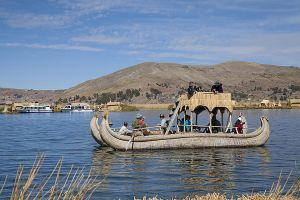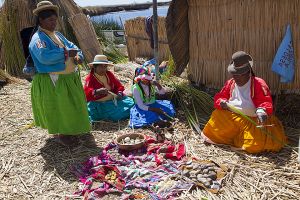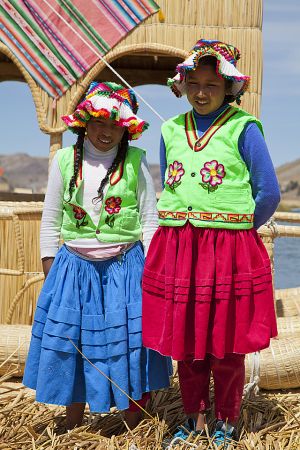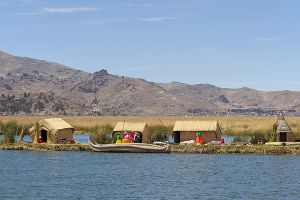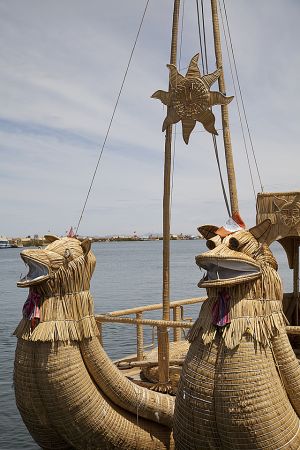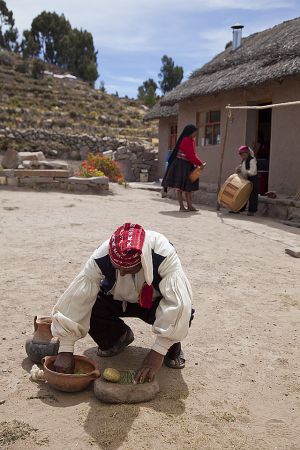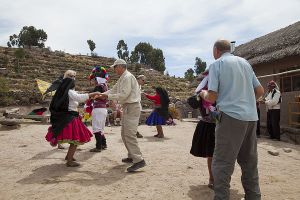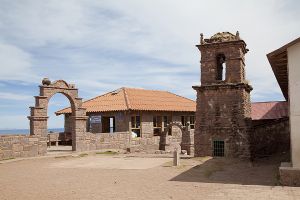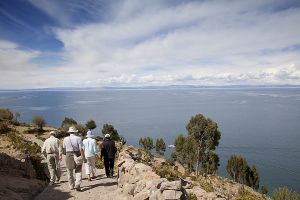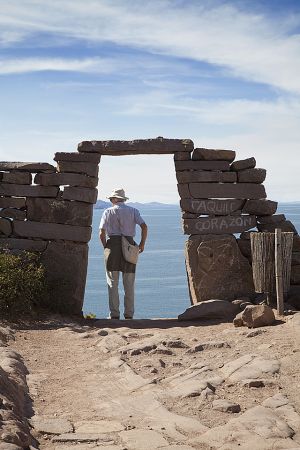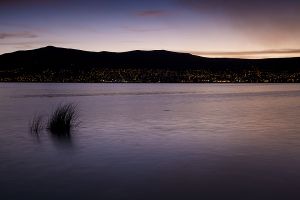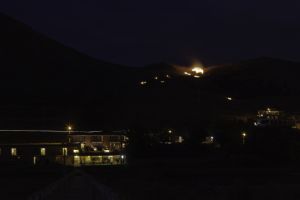Today is a full day sailing on Lake Titicaca. Unfortunately Puno, as with Lima, discharges sewage and other wastewater into Lake Titicaca, so there is a distinct whiff of sewage at the Puno end of the lake. Thankfully Puno only occupies a tiny proportion of the lake, and the smell dissipates the further away from Puno you go. We are off to see the floating village of the Uros people, who live in huts made of reeds. There are more than 40 of these islands – some welcome tourists, and others don’t. We spend about an hour with a related group of 9 families who occupy one floating island, and the head of the family group spends a lot of time explaining (with the aid of an Aymara translator!) how they build and maintain the island and huts, and what the live on. They seem to breed a kind of black heron to use as a form of chicken, and they also catch coots and flamingos for their meat as well. The island also has a tiny trout farm, and the rest of their diet consists of seeds, small native fish that are used in soups, gathered eggs from the local ducks and coots, and the native water reed that they chew for the calcium it contains.
They have also found an ingenious way to recycle plastic water bottles. The boat below is made out of more than 400 plastic bottles, then covered with dried reeds. The Uros charge tourists 10 soles each (about $2.50) to be rowed around in these boats for 20 minutes or so.
We then sail on to Taquile Island, about an hour away from the Uros islands, where we have lunch high up on the hill-side at a local house that doubles as a restaurant. The quinoa soup and grilled wild trout was delicious! After lunch, we hike to the top of the island, at about 3900 metres. Going uphill at that altitude is hard work, and it is a relief for everyone when we reach the top and proceed downhill to the boat, which has been following us around the headland (as shown in the photo below).
It is apparently illegal for the Uros people to conduct large scale burning of the reeds in the shallow waters of the lake, but as you can see from the photo below, legality is a flexible concept in Peru.
That night, I decide to do some night photography from the pier, and find that the hillside about the hotel is also being burnt off!

